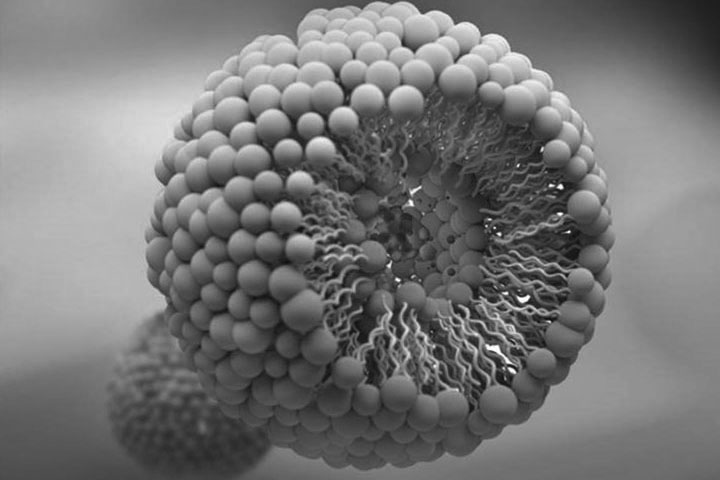A liposome is an artificial vesicle consisting of a double, concentric, folded phospholipid layer. Phospholipids are amphiphilic lipids, so they contain a polar group (hydrophilic head) and an apolar group (lipophilic tail). Liposomes should not be confused with micelles. Micelles consist of a single lipid layer in the form of a sphere and contain surfactants such as an emulsifying agent.
Almost 60 years
The first liposome was made in 1965. The main property of a liposome is that it can contain anything from a drug to genetic material to protect that substance right where it is supposed to work. Proteins can even be inserted into that structure. We then speak of proteoliposomes.
In pharmacology, liposomes are often several nanometers in size, but they can be larger and can contain cancer drugs, for example. Doxorubicin was the first liposomal cancer drug, in that form it is less cardiotoxic. The space in the vesicle depends on the size and type of liposome. For example, we can distinguish multi- and unilamellar, small, large and giant liposomes, which can contain one or more vesicles. For example, a multilamellar liposome can slowly release a drug every time a phospholipid layer ruptures.
Constant improvement
The first generation liposomes mimic only the cell membrane. Such liposomes allow the drug to be integrated directly into the cell. The second generation liposomes contain polyethylene glycol chains (PEG): the process of pegylation, which is used in certain drugs. This stabilizes the liposome, so that it continues to circulate in the bloodstream for longer, and moreover, a targeted treatment can be achieved. The third generation is even more specific and combines stabilization and true targeting through specific antibodies.
More focused, more concentrated
This double lipid layer also protects the substance against external degradation and also transports lipophilic substances, while the hydrophilic substances settle in the center of the liposome. This is especially important for the most sensitive substances, such as vitamins. For example, vitamin C, a water-soluble vitamin, can be put into a liposome so that it is released into the bloodstream only after absorption in the gastrointestinal tract. Other preparations also contain trace elements, which are then better absorbed. In addition to those water-soluble substances, this also applies to fat-soluble vitamins and other nutritional supplements.
Liposomes are also used in cosmetics. Since they mimic the double lipid layer of the cells, it makes sense that liposomes will fuse more easily with the membrane of the skin cells. Liposomes provide a higher concentration of active substance in the stratum corneum, so that it can penetrate better and/or last longer.
Liposomes represent a real revolution in galenics, whatever their application, which is reinvented almost every year with the development of new production methods for even more effective products. It is not for nothing that some people spoke of ‘magic bullets’ in the beginning.

